By John Kerruish | Photographs by Mike Hayward Collection
Just after 6:00pm on Sunday the 30th July 1967, as Phil Hill brought his bewinged Chaparral 2F over the line in first place on the 211th and last lap of the BOAC 500 Sportscar Race, he allowed himself a brief smile. He was indeed a man satisfied with a job well done. Hill and his co-driver Mike Spence, who was sadly to lose his life at Indianapolis the following year, had driven hard and fast for over 6 hours and brought their car home in one piece. It had been a pivotal race in more ways than one.
Pivotal for the pensive Californian in that, after several seasons in the Grand Prix wilderness following the abortive ATS Formula One venture and hard times with Cooper and others in sports cars, the triple Le Mans winner and 1961 Formula One World Champion had shown that he still had what it took to deliver victory in a world-class, long distance event.
Pivotal also for Chaparral, being only the second major European victory, following the previous year’s experimental foray at the Nurburgring 1000kms, for the inspired Texan duo of Jim Hall and Hap Sharp and the latest in their long line of innovative sports car designs. This win being especially significant, breaking up as it did the Ferrari/Porsche hegemony which had existed for so long at the highest level in Sportscar racing.
Pivotal, finally for both the Ferrari and Porsche home-teams, as the race was the closing round of the 1967 F.I.A. World Sportscar Manufacturers Championship, bringing down the curtain on the most hotly contested season for many years. The two grandee teams had come to Brands Hatch with everything to play for; their scores separated by but a single point after the Ford whitewash at the previous month’s Le Mans 24 hours had denied them access to the winner’s circle.
Three days earlier, when the cream of the International Sportscar racing set had gathered for practice, prior to joining battle at the tight and twisty Kentish circuit, the eager spectators had been amazed that closed-wheel racing of this calibre was once again on the menu in Britain. This was indeed the first truly international race, other than a Grand Prix, to be held on British soil since the Goodwood TT’s of the 1950’s!
Not only were all the crack teams present, making up a very full grid, but just about everybody who was anybody from the world of Grands Prix had been signed-up to drive. In addition to the sole 7.0 litre, alloy-block Chaparral entry of Hill/Spence there were three works 4.0 litre Ferrari P4’s, with crews including Jackie Stewart, Chris Amon and Ludovico Scarfiotti, all entered in the open roof ‘Prototype’ category. These were ably backed by the privateer Maranello Concessionaires Ferrari 412 P Coupe of Richard Attwood and David Piper and a number of older LM Ferraris also in private hands. Porsche in turn had pulled out all the stops to field no less than five works cars. The total made up of four 910’s in 2.0 and 2.2 litre guise and an ex-Le Mans long-tailed 2.2 litre 907. Their driving roster included such luminaries as Graham Hill, Jochen Rindt, Jo Siffert, Bruce McLaren and ‘Quick’ Vic Elford. Flying the Ford flag was a John Wyer entered 5.7 litre Gulf-Mirage to be piloted by the great Pedro Rodriguez, in his first drive for the team to which he would later bring much glory, and the S.C.C.A. veteran Dick Thompson. Five privately-entered GT40’s ran in a supporting role. The ubiquitous Lola T70 was not to be ignored either, represented, amongst others, by a 5.7 litre MkIIIB works car for John Surtees/David Hobbs and a similar; Sid Taylor entered machine for soon to be crowned Formula One World Champion Denny Hulme and his boss Jack Brabham.


1967 BOAC International 500 – Profile and Photos Continued
1967 BOAC International 500 – Profile and Photos Page Two
Race day arrived under leaden skies. Hulme in the works Lola sat confidently on pole with a time of 1:39.8. John Surtees brought up 2nd, on his left, the much-fancied, red Sid Taylor Lola bearing his trademark white arrow on the nose. This left Mike Spence in the lone Chaparral, to have a go round the outside of Paddock Hill Bend from the final front-row spot. The race, belying its title billing, was actually to be run over 6-hours rather than 500 miles. At mid-day precisely the capacity 36-car grid tore off the line in a glorious cacophony of V8, V12 and Flat-8 noise. No one appeared to have told the drivers that this was an endurance race and the accepted race strategy seemed to be flat out all the way.
Within 15 minutes the front-runners, led away from the line by Surtees, Scarfiotti and Spence, the latter trying to make the best of the standing-start acceleration deficit imposed by the Chaparral’s fragile Automatic transmission, were in amongst the back-markers. Blue overtaking flags fluttered everywhere. Marshals and spectators alike were on their toes. Dicing continued in thrilling confusion with the eye-popping sight, at least for the British audience, of the Chaparral, Ferrari, Porsche and Lola sharks mixing it amongst shoals of MGB, Lotus Elan and even Austin-Healey 3000 minnows. Most of the major contenders soon bore scars attesting to the need to barge through the traffic.


At the end of the first hour’s racing Hulme had lost time with a broken rocker-arm in his Lola. Surtees’ Lola was falling away from the leading group with a persistent misfire. Scarfiotti had suffered a lurid, high-speed spin in the Ferrari and Spence (Chaparral) led from Stewart (Ferrari) and the now more distant but hard-chasing Scarfiotti. A general rush for the pits now began, causing timekeepers and officials to work overtime in keeping track of things. By the second hour Rodriguez in the distinctive Blue and Orange liveried Gulf-Mirage had moved up into contention but, following routine fuel stops, his American team-mate Thompson couldn’t quite match the mercurial Mexican’s pace and dropped back, later to crash out.
After two hours of nail-biting tension the order was: Porsche (Siffert) Chaparral (now piloted by Hill) and Amon’s Ferrari bringing up third place. The Scarfiotti/Sutcliffe Ferrari had by now lost ground with tyre trouble and other maladies. A minor glitch in the Chaparral master-plan occurred during the third hour. Just as the winged-wonder’s pace was really beginning to tell and Siffert and the Ferraris had been worn down, a rear-wheel puncture intervened. Unflustered, the well-drilled Chaparral pit-crew soon had Hill back into the fray and he now put on a brilliant show to pull himself back through into a narrow lead. Had it not been for the puncture, the Chaparral duo might have retained the lead through the next round of driver changes. As it was, with the race moving into its fourth hour Spence took over from Hill, disentangling himself from a pit-lane traffic-jam to inherit third place behind the Ferrari of Stewart/Amon and the Porsche of Siffert/McLaren. Short work was made of the 2.2 litre, 8-cylinder Porsche, but the rapid 4.0 litre Ferrari Prototype was a different matter.
At the end of the fourth hour fate intervened to Spence’s benefit. Orchestrated, in true comic style, it could only have happened to Ferrari. Paul Hawkins lost the P4 he was sharing with Jonathan Williams on the exit of Clearways and spun off the course backwards. The resultant bodywork damage causing him to limp straight to the pits just as the leading Stewart/Amon car was due in for a routine fuel, oil and driver-change stop. There wasn’t room or personnel enough to attend to both cars. Ferrari Team manager Mauro Forghieri had hysterics as the disabled car blocked its race-leading sister in the narrow Brands pit lane and mechanics milled around both cars denying attention to the more deserving Amon who, by now, really needed to get going if he was to salvage anything from the charade. This episode not only cost Ferrari the race lead, it also nearly wiped out their championship hopes.
As the fifth hour drew to a close, the white Chaparral, now being driven by Hill, held a narrow 18 second lead over Amon. The metronomically reliable Porsche 910 of Siffert/McLaren still bringing up third place. Things were not quite as tight as they seemed though, since the high-revving, thirsty Ferrari had another fuel stop to make. Hill, as ever, was circulating with cool confidence and if fate was really to be on his side that day, the only thing that could upset the applecart would be another Ferrari fiasco at the final pit stop. If Mauro’s men couldn’t pull Amon out of the Maranello car and strap ‘Wee Jackie’ in followed by a good splash of fuel in double quick time, Siffert would cruise by into second place and Porsche would carry the championship silverware home to Stuttgart.


As it turned out, there was nothing to worry about this time. With only ten minutes of the race remaining the Ferrari mechanics put on a well-organised display to atone for the previous debacle. Stewart, in what he later said was ‘A most enjoyable drive in a sweet-handling car’ rejoined the fray still almost a full lap ahead of the Porsche and the German team was denied its day of glory in a championship it wouldn’t actually win outright until 1969.
According to plan, Phil Hill finally brought the still-unmarked Chaparral home to a 4-minute victory over the Stewart/Amon Ferrari with Siffert/McLaren an honourable third, one lap adrift in the white Porsche 910. At 40 years of age it would prove to be the last major victory of the American’s illustrious career and also the final hurrah for the winged wonder from Texas which wasn’t raced again after 1967.
Truly the pivotal race that we began with, and one to be savoured all the more for the fact that a small but well-organised bunch of Americans humbled the mighty European works teams on turf other than Le Mans.
[Source: John Kerruish; photos: Mike Hayward Collection]


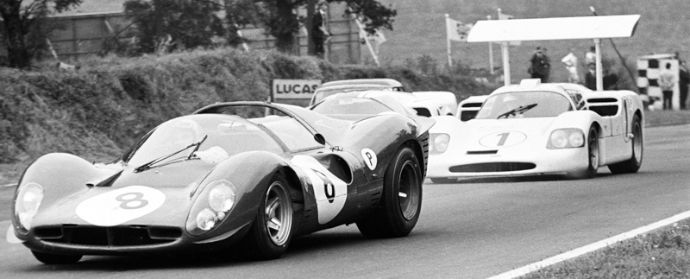


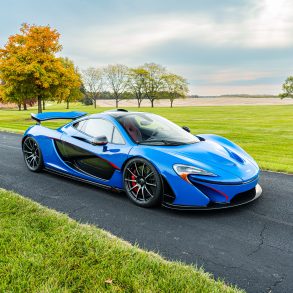
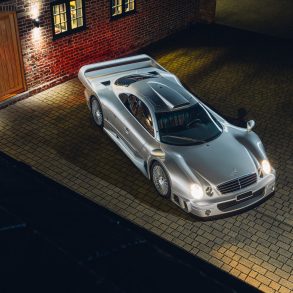
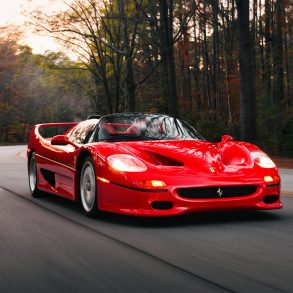
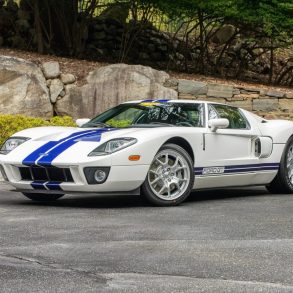


Love the pix. I remember that Chaparral from Sebring. I also remember being only a couple of feet from Phil Hill and Olivier Gendebien when they won at Sebring in a red Ferrari. Mr. Hill was a great driver, and an even greater gentleman. He will be greatly missed by his (now aging) fans. What racing! What drama! What fun, if (you the driver) survived.
I realized that three of phil hills co drivers that he won races with all died in racing accidents! that would be jo bonnier , pedro rodriguez and mike spence! ! always rooted for phil in any car he was driving! jo, mike and pedro are missed! R I P!!!
All photographers need to step up and make their work available for free on the net. No point in fading away without sharing your talent. Most of your (and mine) stuff is available anyway. Do it!
Phil Hill and Jo Bonnier won the Nurburgring 1000K in 1966, also Phil won the Daytona 2000K in 1964, drove brillantly in FORD GTs in 64′ and 65′, and had his final win at Brands Hatch in 67′, his skills never left him, just two very bad team choices at ATS and Cooper, a pity he didn’t drive for Honda in F1 in 1965!
I was there, supporting my hero Bruce Mclaren, who drove a truly outstanding race, (only to be expected of the great man). I have posted a fair few pics on the http://www.racingsportscars.com website.
It was a great day out, topped by being able to share some bubbles with Bruce and other members of the Porsche team.
I was at that Race in 1967 and remember the sights and sounds well. Brands is a small track and even the GP circuit newly opened meant that the cars were in spectator view for long periods of the lap. The Chaparral pounded round and round in the latter part of the race, instantly recognisible as the low frequency earth shaking rumble was heard long before it was seen! The High rear wing opened up for the straights and pointed down for the bends.There were faster and more advanced cars present but none had the drama of this car and that wing started it all! The driver list was unbelievable…more talented than a grand prix